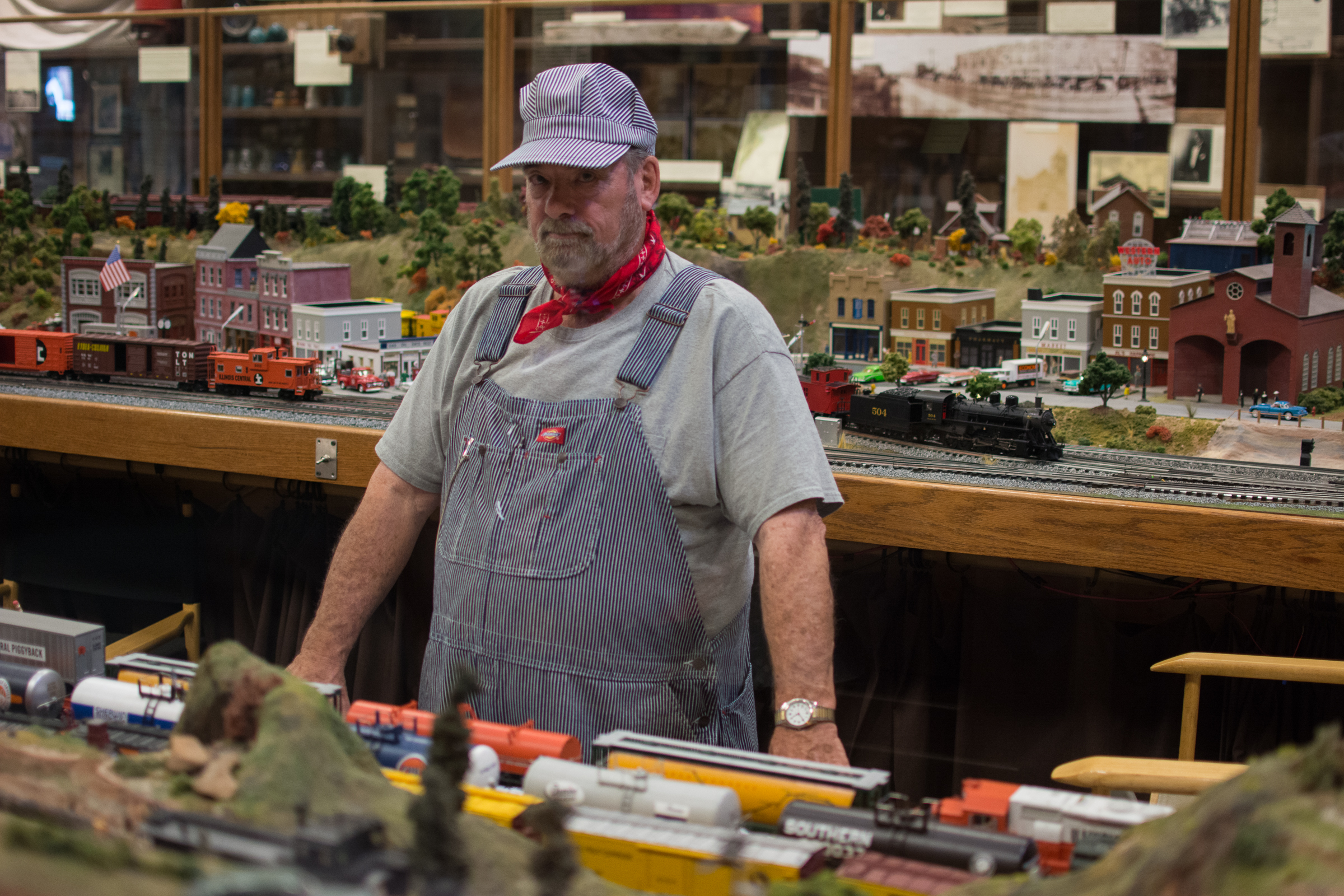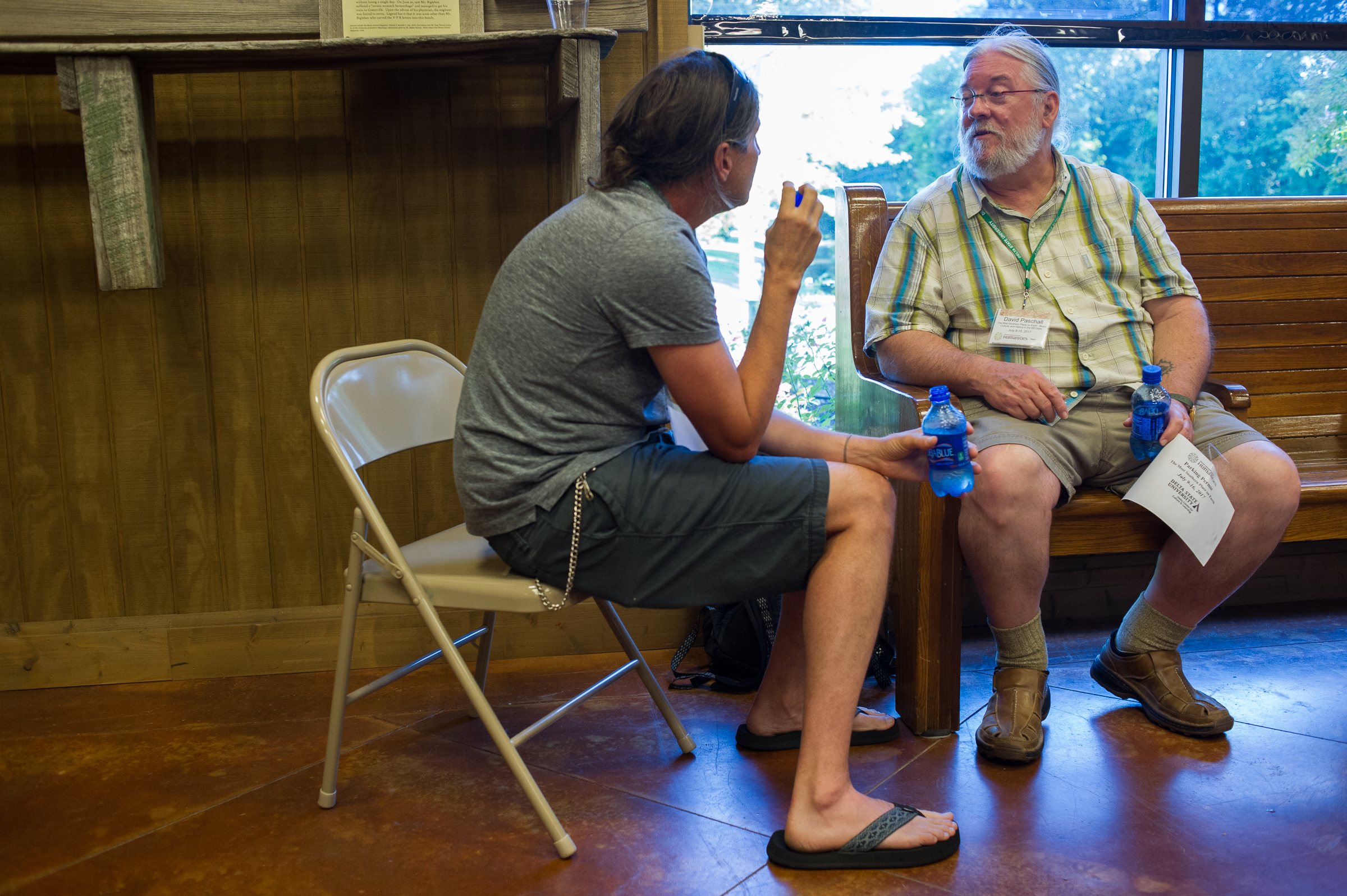The July session of the Delta Center’s “Most Southern Place on Earth” workshop concluded this Saturday. Dr. John Strait, a professor of geography at Sam Houston State University, delivered the final lecture. He discussed the diffusion of Delta culture throughout America, focusing on how Southern events, ideas, and people shaped national music, religion, and politics. The group then reflected on their experience by creating their own mojo, an activity that originated in the folk magic of the Hoodoo spiritual tradition. Participants chose symbolic ingredients, such as flowers from the Chinese Cemetery and water from the Mississippi River, and wrapped their selections in black cloth. The mojo acts as both a personal souvenir and an educational tool. Finally, the group presented the Delta Center staff with cards, relived the week through photos and videos, and prepared to say goodbye to “the most Southern place on earth.”
NEH "Most Southern Place" July Workshop: Day 5
On Friday, the Most Southern Place on Earth workshop headed to Memphis, Tennessee. Along the way, the group stopped in Clarksdale to visit the Greyhound Bus Station and witness the physical remainders of Jim Crow: separate waiting rooms that once divided black and white passengers. After arriving in Memphis, participants went first to the Cotton Museum, then to the Stax Museum, dedicated to Stax Records and the soul music it cultivated. The group split in two for lunch at Central BBQ and Lyfe Kitchen before reuniting at the National Museum of Civil Rights at the Lorraine Motel. The evening concluded with the traditional march of the ducks at the Peabody Hotel.
Click "Read more" above to see photos and explore a more detailed account of the day.
NEH "Most Southern Place" July Workshop: Day 4
The Most Southern Place workshop continued this Thursday. The day began with a driving tour of Mound Bayou, including stops at the Taborian Hospital and T.R.M. Howard's Freedom Trail marker. Next came a stop at Po' Monkey's, where participants learned about the central role juke joints played in Delta culture. After a brief break, civil rights leader Charles McLaurin shared his experiences with the group. The afternoon focused on the story of Emmett Till through several sessions: a panel featuring Emmett's cousin, a trip to the Emmett Till Historic Intrepid Center, and a stop at Bryant's Grocery. Finally, the group paid their respects at one of three graves attributed to blues legend Robert Johnson.
Click "Read more" above to see photos and explore a more detailed account of the day.
NEH "Most Southern Place" July Workshop: Day 3
Wednesday's session of the Most Southern Place on Earth workshop revolved around the blues, tracking the genre's development through the lens of broader social and cultural trends. The day began with a trip to Dockery Farms, the birthplace of the blues. After a brief stop at the crossroads, participants reflected on the legacy of civil rights activist Fannie Lou Hamer at her gravesite. Next came a trip to the B.B. King Museum, located in the former workplace of the blues legend. Throughout the day, Dr. Edgar Smith shared a personal perspective on the people and places discussed, from his childhood picking cotton to his friendships with Fannie Lou Hamer and B.B. King. The evening concluded with a lecture by renowned ethnomusicologist Dr. David Evans, who narrated the evolution of the blues.
Click "Read more" above to see photos and explore a more detailed account of the day.
NEH "Most Southern Place" July Workshop: Day 2
The Most Southern Place on Earth workshop continued on Tuesday, with a series of events focused on the cultural, religious, and musical diversity of the Delta. Participants first traveled to Greenville, where they visited the town's Chinese and black cemeteries. Raymond Wong shared his experience as one of the few remaining Chinese Americans in the Delta, highlighting Asian immigrants' contributions to the region's economy and culture. The group then stopped at the historic Hebrew Union Temple to learn about the Delta Jews from Temple Vice President Benji Nelken. After stopping at a museum dedicated to the flood of 1927 and another devoted to Greenville's history, the group headed back to Cleveland. In the afternoon, University of Mississippi Professor Dr. Charles Wilson gave a lecture on religious beliefs in the South, and later blues musician Bill Abel performed and taught participants about the history of music in the Delta.
Click "Read more" above to see photos and explore a more detailed account of the day.
NEH "Most Southern Place" July Workshop: Day 1
The Most Southern Place on Earth workshop, a collaborative effort by the Delta Center and the National Endowment for the Humanities, began its July session this Monday. Dr. Rolando Herts and Lee Aylward introduced participants to the history and culture of the Mississippi Delta region. After lunch at Senator's Place, the group watched LaLee's Kin, an Oscar-nominated documentary; met with Reggie Barnes, former superintendent of West Tallahatchie School District; and traveled to the site of the 1927 levee breach along the Mississippi River. The evening concluded with a catfish dinner and blues performance at Airport Grocery.
Click "Read more" above to see photos and explore a more detailed account of the day.
"The Most Southern Place on Earth" July workshop begins

























The July session of the Delta Center’s “Most Southern Place on Earth” workshop began Sunday evening with an opening reception at the Martin and Sue King Railroad Museum in downtown Cleveland.
The workshop, funded by the National Endowment for the Humanities, attracts thirty-six K-12 educators from across the country. Participants will spend a week in the Delta immersed in the history and culture of the region, interacting directly with its people and places.
This workshop has created a national network of over 500 educational and cultural ambassadors for the Mississippi Delta National Heritage Area. Participants take what they have learned from the workshop back to their schools and communities, sharing stories and lessons from the Delta with students, colleagues, family, and friends both nationally and globally.
NEH "Most Southern Place" June Workshop: Day 6















The June session of the Delta Center’s “Most Southern Place on Earth” workshop concluded this Saturday. Dr. John Strait, a professor of geography at Sam Houston State University, delivered the final lecture. He discussed the diffusion of Delta culture throughout America, focusing on how Southern events, ideas, and people shaped national music, religion, and politics. The group then reflected on their experience first by viewing photos and videos from the week, and later by creating their own mojo, an activity that originated in the folk magic of the Hoodoo spiritual tradition. Participants chose symbolic ingredients, such as flowers from the Chinese Cemetery and water from the Mississippi River, and wrapped their selections in black cloth. The mojo acts as both a personal souvenir and an educational tool. After several participants shared creative pieces, the group presented the Delta Center with a commemorative brick at the Civil Rights Museum and prepared to say goodbye to “the most Southern place on earth.”
In the video below, workshop participants reflect on the week and how it has impacted them.
NEH "Most Southern Place" June Workshop: Day 5
On Friday, the Most Southern Place on Earth workshop headed to Memphis, Tennessee. Along the way, the group stopped in Clarksdale to visit the Greyhound Bus Station and witness the physical remainders of Jim Crow: separate waiting rooms that once divided black and white passengers. After arriving in Memphis, participants went first to the Cotton Museum, then to the National Museum of Civil Rights at the Lorraine Motel. There they had the unique opportunity to take a behind-the-scenes tour of the collections. The evening concluded with the traditional march of the ducks at the Peabody Hotel.
Click "Read more" above to see photos and explore a more detailed account of the day.
NEH "Most Southern Place" June Workshop: Day 4
The Most Southern Place workshop continued this Thursday. The day began with a driving tour of Mound Bayou, including stops at the Taborian Hospital and T.R.M. Howard's Freedom Trail marker. Next came a stop at Po' Monkey's, where participants learned about the central role juke joints played in Delta culture. After a brief break, civil rights leader Charles McLaurin shared his experiences with the group. The afternoon focused on the story of Emmett Till through several sessions: a panel featuring Emmett's cousin, a trip to the Emmett Till Historic Intrepid Center, and a stop at Bryant's Grocery. Finally, the group paid their respects at one of three graves attributed to blues legend Robert Johnson.
Click "Read more" above to see photos and explore a more detailed account of the day.













